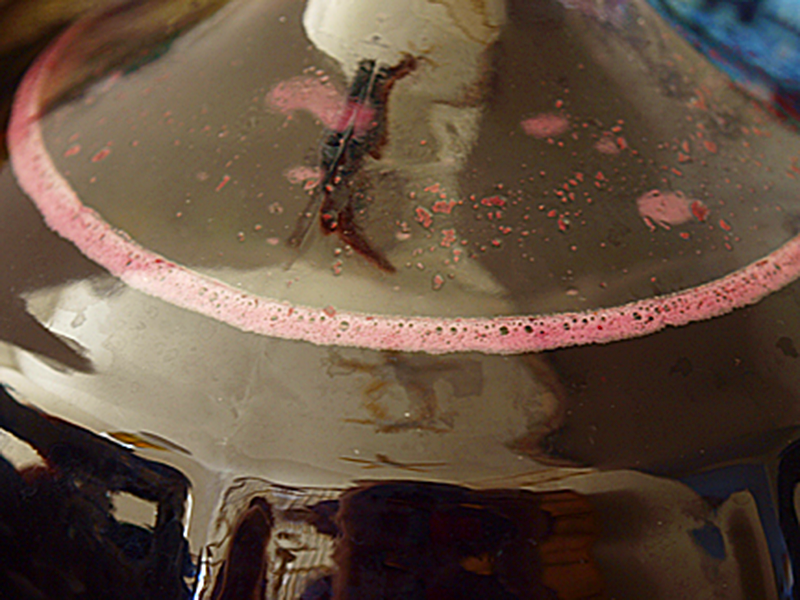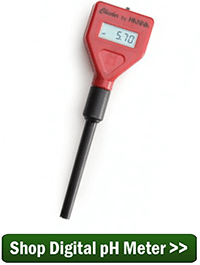 I added malolactic culture to two carboys of wine approximately 30 days ago. One of them showed sign of good fermentation, but in the second one the malolactic fermentation won’t start. What can I do with the carboy that is not fermenting?
I added malolactic culture to two carboys of wine approximately 30 days ago. One of them showed sign of good fermentation, but in the second one the malolactic fermentation won’t start. What can I do with the carboy that is not fermenting?
Thank James
———-
Hello James,
There are a few reasons why a malolactic fermentation won’t start or complete in a wine. Before adding the malolactic culture to the wine it is best to make sure that you have some things in order. The environment that the wine is providing for the culture needs to one that promotes a malolactic fermentation. Here or some thing to consider:
- Temperature: Make sure the malolactic fermentation temperature is between 70°F. – 75°F. If the temperature is too cool the malolactic culture will not ferment as hardily as it should, if at all. Also, beware of malolactic fermentation temperatures above this range. These temperatures could promote the growth of unwanted organisms that may produce off-flavors in the wine. If you are currently experiencing MLF temperatures that are cooler than this, we have a heating belt that is designed specifically for such a situation. I doubt that this is the reason why your malolactic fermentation won’t start since both carboys are side-by-side, but I’ve included here for completeness, just the same.
- Acidity: Just like temperature, the wine’s acidity level needs to be tested to make sure it is in a decent range. If the acidity is too high, it will inhibit the malolactic culture’s activity. You also need to be concerned about having too low of an acid level. This will promote the growth of unwanted bacteria. A simple pH reading will do. You can use pH Strips (litmus papers) or a digital pH meter. You
 would like to have the pH be between 3.2 and 3.6. Remember, the scale works backwards. The lower the number the higher the acid. If your acidity is too high, then treat the wine with acid reducing crystals. This will drop out some if the acid as crystals. If the acidity is too low then add some acid blend.
would like to have the pH be between 3.2 and 3.6. Remember, the scale works backwards. The lower the number the higher the acid. If your acidity is too high, then treat the wine with acid reducing crystals. This will drop out some if the acid as crystals. If the acidity is too low then add some acid blend.
- Alcohol: If the wine’s alcohol level is too high this can by why your malolactic fermentation won’t start. This type of problem can be experienced with wines that are 13% or higher. It may be necessary to dilute the wine with water to bring the alcohol concentration down. Always use distilled water for this purpose.
- Sulfite (SO2): A malolactic fermentation is very sensitive to sulfite. It is much more sensitive than a yeast fermentation. Sulfite is the main ingredient you are adding when you use Campden tablets, potassium metabisulfite or sodium metabisulfite. It is also produced naturally by the yeast during a fermentation. You would like the amount of free SO2 in the wine to be no higher than 10 ppm. You can get away with 15 ppm, but it is not preferable. You can use a Titret test kit to determine how much sulfite is in your wine. If there is too much, you can lower it by racking the wine into another vessel. Do so in a splashing manner. This activity will cause some of the SO2 to dissipate as a gas.
Ironically, if you cannot get the malolactic fermentation to start in your wine after making these adjustments, it is in the wine’s best interest to pull-the-plug on the project and bring the sulfite level up to a normal level – somewhere around 35 ppm to 55 ppm – and bottle the wine. This reason for this is that if the SO2 level is low in preparation for a malolactic fermentation, you don’t want the wine to stay still too long in this situation. You want to either bring the SO2 level up to a protective level, or have an active MLF. Having neither for a stretch of time is jeopardizing the wine.
That’s how to get a malolactic fermentation going in your wine. Get the temperature and these other things set and your MLF starter should take off just fine. There may be other reasons why a malolactic fermentation won’t start, but I’m confident that the above covers 99% of the issues.
If you’d like to read more about this we have another blog post about the reasons for doing a malolactic fermentation.
Best Wishes,
Ed Kraus
—–
Ed Kraus is a 3rd generation home brewer/winemaker and has been an owner of E. C. Kraus since 1999. He has been helping individuals make better wine and beer for over 25 years.

Could you start the MLF when you rack to the secondary vessel? At this point the alcohol level should not be too high and all the other conditions should be conducive to an active fermentation. Is there a down side to doing it that way? Always enjoy the information that you provide and the input of your “wine family.”